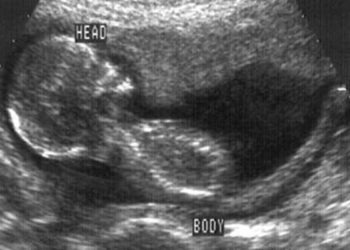Prophylactic tranexamic acid during cesarean section does not lower risk of mortality or transfusion
1. In this randomized controlled trial, prophylactic administration of tranexamic acid during cesarean section did not lead to a lower risk of composite maternal death or blood transfusion as compared to placebo.
2. There was no difference in the need for surgical or radiologic intervention by seven days postpartum between the treatment and placebo groups.
Evidence Rating Level: 1 (Excellent)
Study Rundown: Postpartum hemorrhage is associated with significant maternal death worldwide. In this study, the primary outcome of a composite score for maternal death and blood transfusion was observed at similar rates in patients undergoing cesarean section in those receiving tranexamic group as compared to placebo. Bleeding above one liter was more common in the placebo group than the tranexamic group. Treatment and interventions for bleeding and related complications were more common in the placebo group. The pre- and post-operative change in hemoglobin was greater in the placebo group than in the tranexamic acid group. With regard to secondary outcomes, there was no significant difference in thromboembolic events, ischemic stroke, or myocardial infarction between the two groups. Additionally, there was no statistical difference between groups for admission to the Intensive Care Unit (ICU) for more than 24 hours or in hospital readmission. Finally, there was no difference in rates of side effects such as nausea, vomiting, or dizziness between groups. The strength of this trial includes the large sample size and the distribution of planned versus unscheduled cesarean sections between groups to control for potential confounders. These strengths allow the results to be better generalizable to the broader population.
Click to read the study in NEJM
In-Depth [randomized controlled trial]: This multicenter, double-blind, randomized controlled trial evaluated the administration of tranexamic acid immediately after umbilical-cord clamping to reduce maternal death and the need for blood transfusion among patients undergoing scheduled or emergency cesarean section. Patients were randomly assigned to receive either one gram of tranexamic acid diluted in 40 mL of normal saline or the placebo (50 mL of normal saline) intravenously over ten minutes immediately after cord clamping. The primary outcome was a composite of maternal death or blood transfusion before hospital discharge or seven days postpartum. The present study included 5,529 patients in the tranexamic acid group and 5,471 patients in the placebo group (total of 11,000 patients). The adjusted relative risk for composite maternal death or blood transfusion in the tranexamic acid versus placebo groups was 0.89 (95% Confidence Interval [CI], 0.74 to 1.07; p=0.19). Intraoperative blood loss above one liter was the pre-specified major secondary outcome of the study. This secondary outcome occurred at a higher rate in the placebo group (8.0%) as compared to the tranexamic acid group (7.2%) with a relative risk of 0.91 (95% CI, 0.79 to 1.05). The most common major safety outcomes were thromboembolic events, seizures, and intensive care unit admission. There was no significant difference in safety outcomes between the groups. In summary, this study demonstrates that prophylactic tranexamic acid during cesarean section may not improve maternal outcomes.
Image: PD
©2023 2 Minute Medicine, Inc. All rights reserved. No works may be reproduced without expressed written consent from 2 Minute Medicine, Inc. Inquire about licensing here. No article should be construed as medical advice and is not intended as such by the authors or by 2 Minute Medicine, Inc.







